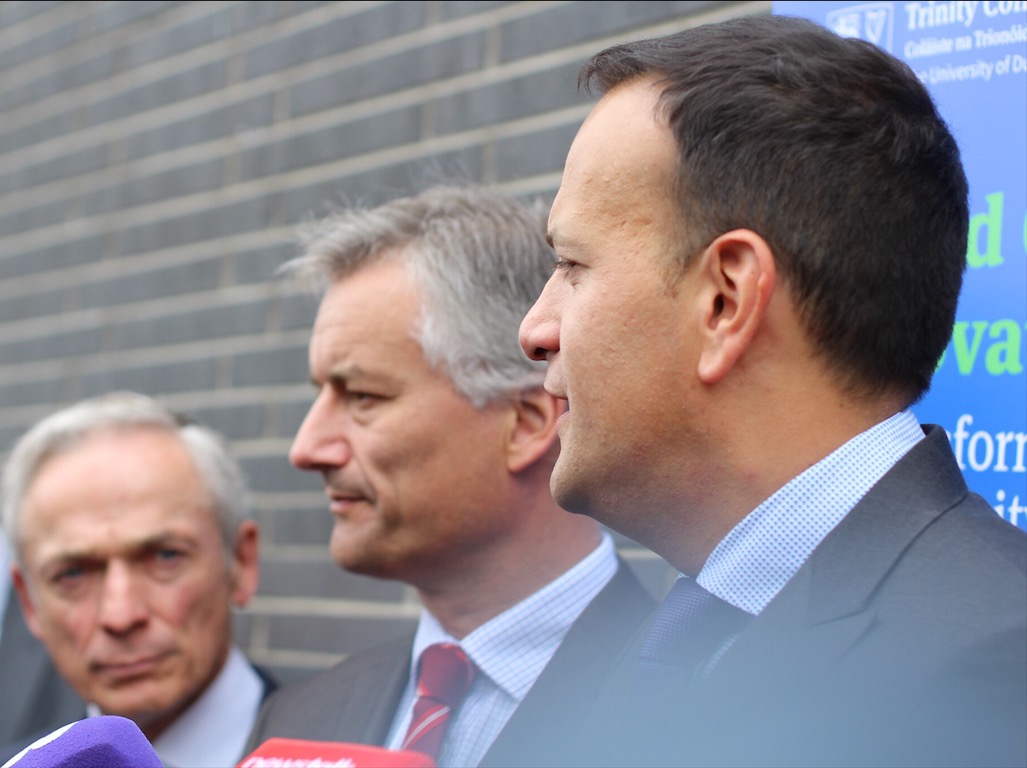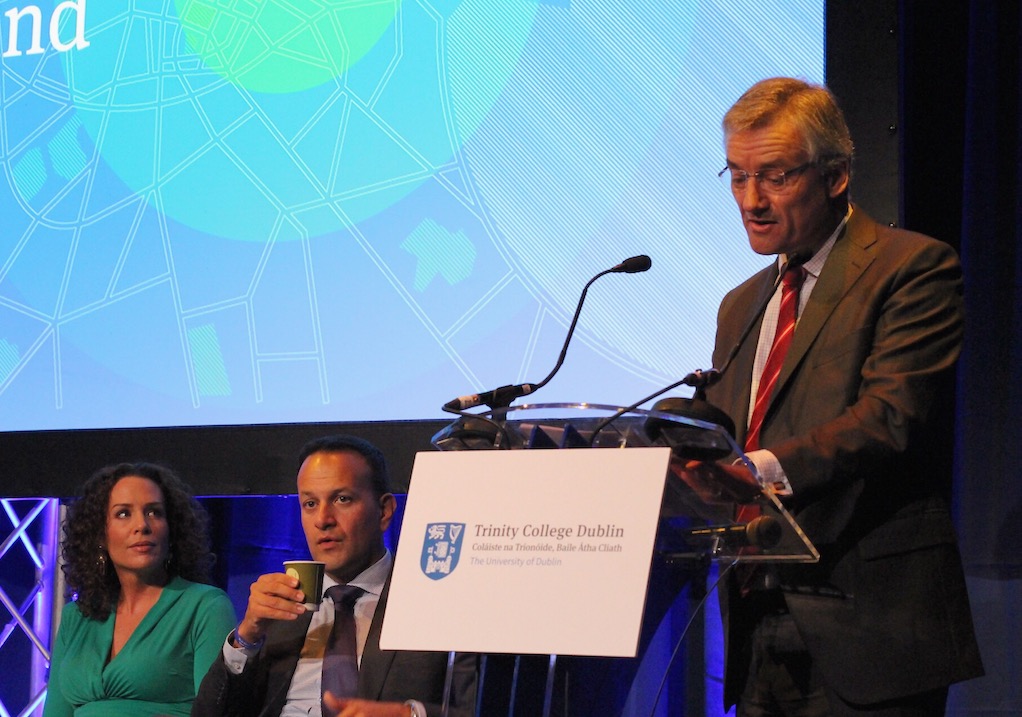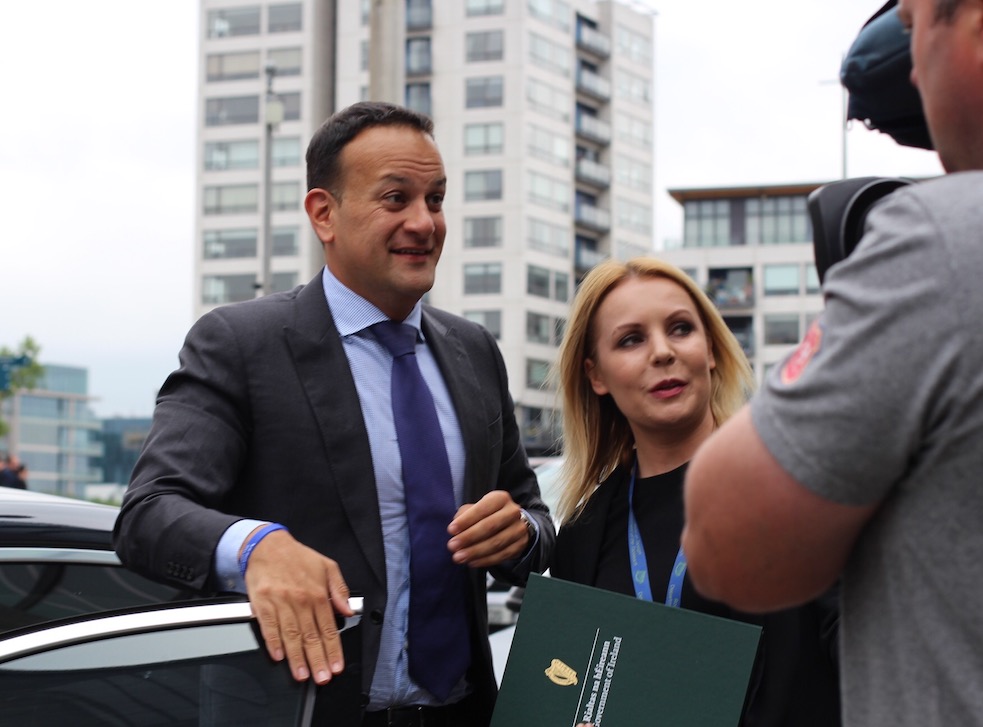Trinity’s €1 billion Technology and Enterprise Campus (TTEC) will be central to the government’s pitch to become a globally competitive centre for innovation and entrepreneurship. The move is sure to boost the College’s international profile.
Taoiseach Leo Varadkar today announced plans for developing Grand Canal Dock into an innovation district where universities and industry will come together to develop new technologies. Trinity’s ambitious new campus will be financed by Trinity in collaboration with industry.
An advisory group, chaired by the Secretary General in the Department of an Taoiseach, John Callinan, will oversee the development of the innovation district proposal, with universities in Dublin collaborating with the government to deliver this new project.
Plans for the district were launched this morning in a packed Lir Academy, with politicians, Trinity academics and businesspeople listening intently to Trinity and the government’s plans to put Dublin on the map as an innovation and entrepreneurship hub.
Speaking at the launch, Provost Patrick Prendergast said: “A new innovation district with a new university campus at its heart is a vital step in enabling Dublin to be ranked in the top 20 global cities for innovation”.
He continued: “At a time when the availability of talent and innovation drives business and growth globally, we must as a country square up to the challenge and establish the infrastructure necessary to compete internationally”.
Modelled on districts in cities like Boston, Toronto, Rotterdam and Barcelona, the new innovation district is hoped to draw in more foreign direct investment. Speaking at the launch, Varadkar said “This is the perfect place to have an innovation district. It’s here at the heart of Dublin, surrounded by Ireland’s own silicon docks and connected to a world class research and innovation ecosystem”.
Chief Innovation and Enterprise Officer Diarmuid O’Brien, in his presentation at the Lir, emphasised the importance of connecting arts and humanities with STEM developments. “It’s this combination that will provide the sustainability of our innovation capability over the next generation”.
“It’s about having the ambition for the university, like Trinity was a decade ago, to be ranked in the top 50 in the world,” O’Brien said.

The move comes shortly after the government announced it would be investing €15 million to the first phase of the Engineering, Energy and Environment (E3) Institute, along with Ireland’s largest-ever philanthropic donation.
The successful launch of both projects – within mere weeks of each other – is sure to come as a boost for Trinity, at a time when the College is struggling to maintain its world-class status amid a severe funding crisis for higher education. The College recently fell from the top 100 in the QS World Rankings, with staff citing the lack of state funding as a contributing factor.
Since the TTEC was announced last year, Prendergast has visited cities like Rotterdam, Philadelphia, London and Paris to learn more about their campuses and how he could ensure the project’s success. In a promotional video released at the launch, he said that “an innovation district done at scale needs to work in partnership with other higher education institutions”, pushing the importance of partnership between the universities, industry and the state.

Last year, funding for TTEC was uncertain. It was estimated that the project would cost up to €1 billion and that its would be necessary for the state to pay 20 per cent of that funding. Today, no state funding was confirmed.
Speaking to The University Times last July, O’Brien said: “I think there’s no question that when we talk to government we still get very clearly that the availability of funding for capital within the third-level sector, the higher education sector, is limited and this project doesn’t change that.”
The location of the campus was chosen because of its proximity to the offices of many of the world’s largest technology companies. The campus will provide extra space for Trinity, which is plagued with concerns over the lack of space for the ever-increasing number of students.
Prendergast has become known for his interest in entrepreneurship, and has focused heavily on it throughout his tenure.







